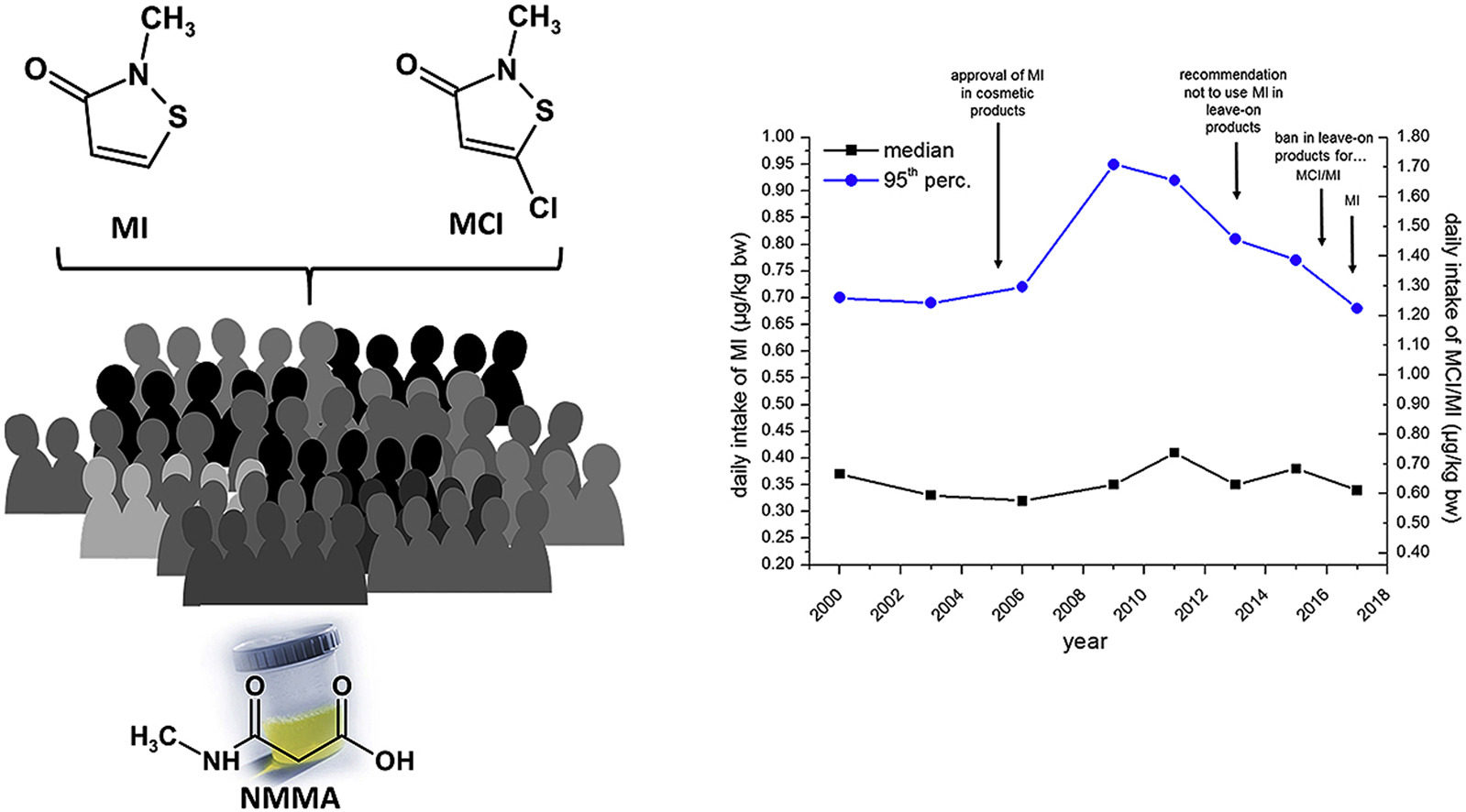N-methylmalonamic acid (NMMA) as metabolite of methylisothiazolinone and methylchloroisothiazolinone in 24-h urine samples of the German Environmental Specimen Bank from 2000 to 2017 - exposure and time trends
Schettgen, Thomas; Rüther, Maria; Weber, Till; Kraus, Thomas; Kolossa-Gehring, Marike
Chemosphere (2019), 125743; online 27. Dezember 2019
Abstract
Methylisothiazolinone (MI) and the mixture of methylchloroisothiazolinone/methylisothiazolinone (MCI/MI, 3:1) are widespread biocides used in cosmetics, household products, paints or as disinfectant in air-conditioning systems. Exposure to these compounds has raised concerns due to their sensitizing potential, as rates of skin sensitization were reported to increase in the last decade. We have analyzed N-methylmalonamic acid (NMMA), a common metabolite of MI and MCI in 24-h urine samples of the German Environmental Specimen Bank collected from 480 participants (240 male/240 female) between the years 2000 and 2017. Using these data, we were able to calculate the overall daily intake of MI and/or MCI/MI (3:1) of the study participants and point out time trends. NMMA was determined in all urine samples investigated above the LOQ of 0.5 μg/L urine. Median and 95th percentile level of NMMA in all 24-h urine samples was 4.1 μg/g creatinine and 8.5 μg/g creatinine, respectively. This would correspond to a median and 95th percentile daily intake of 0.35 μg/kg bw and 0.71 μg/kg bw for exclusive uptake of MI and 0.64 μg/kg bw and 1.28 μg/kg bw for exclusive uptake of MCI/MI (3:1). We noted only slight variations over time for median exposures, but an increasing time trend in the 95th percentile exposure between 2006 and 2011 with a decrease in recent years, probably reflecting regulatory measures on MI and MCI/MI (3:1) in cosmetic products. Increasing knowledge on determinants of exposure to MI and/or MCI/MI (3:1) would be necessary to further lower exposure to these sensitizing compounds.
doi: 10.1016/j.chemosphere.2019.125743
